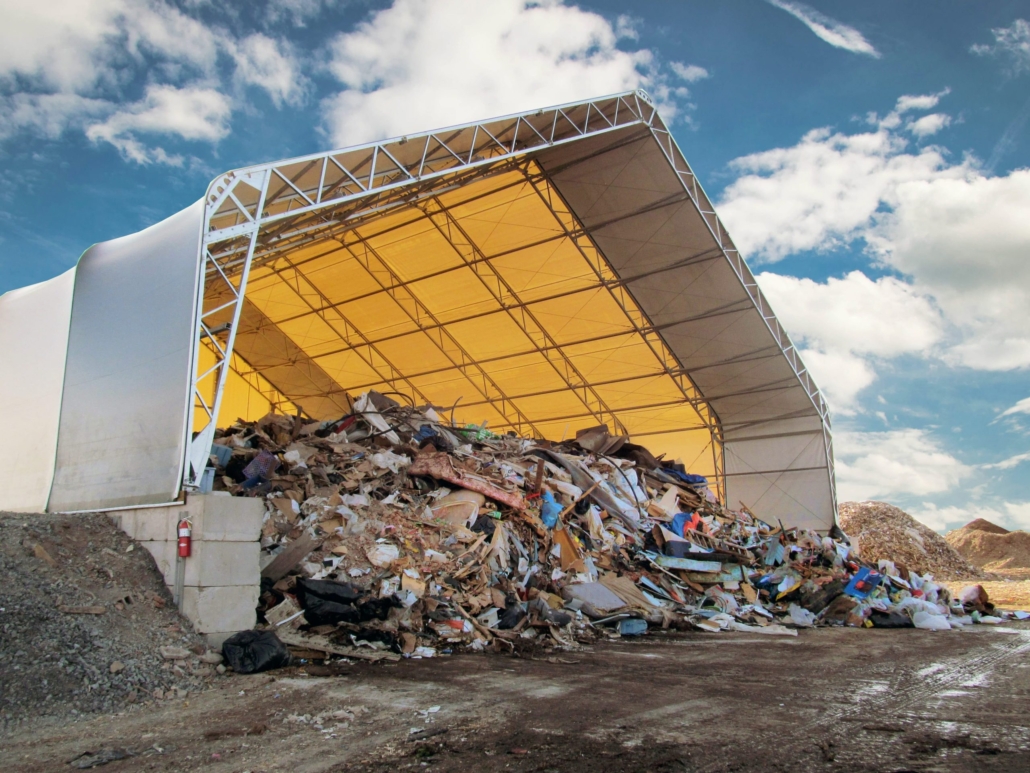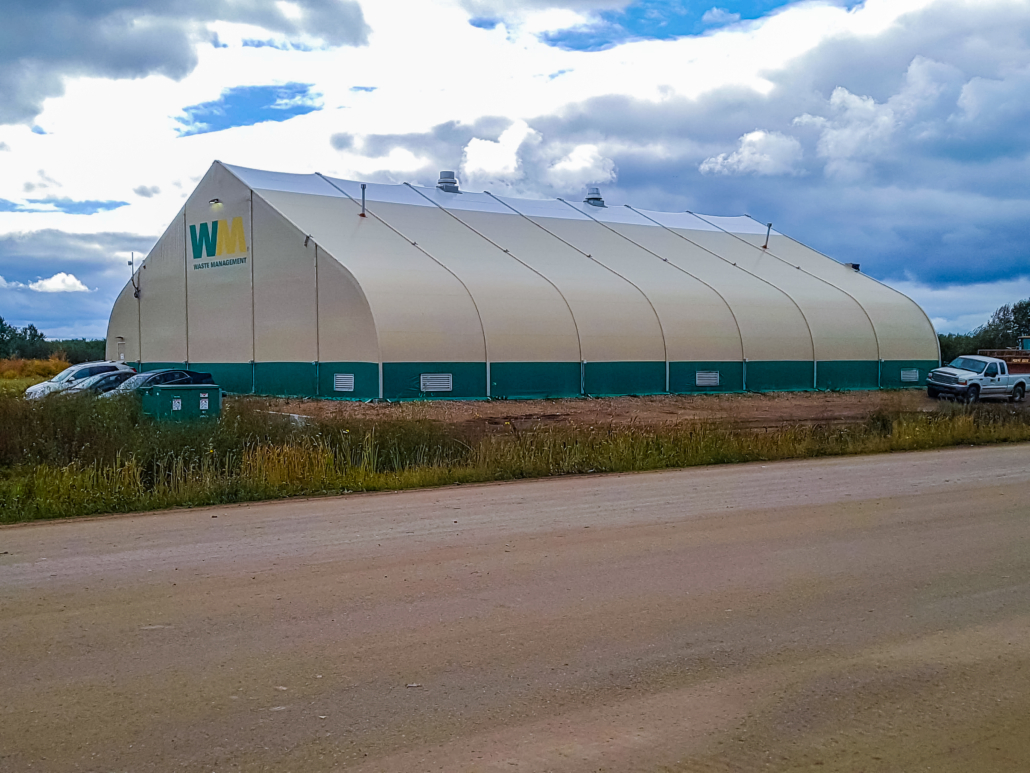Fabric Buildings + Waste Transfer Facilities

With all the different types of waste that need to be collected and transported, it can be challenging to track what needs to happen and where. Waste transfer stations help you manage your waste by providing a central location for all your waste streams to be sorted and processed efficiently.
Waste transfer stations come in many shapes and sizes, but they all share some common features. For a waste transfer station to work effectively, it needs to be designed with certain features in mind.
What Is a Waste Transfer Station?
A waste transfer station is a light industrial facility where municipal solid waste is temporarily staged during its eventual journey to the landfill or waste-to-energy facility. These facilities can be controversial within communities where they are located because of their proximity to residential areas and because they may be perceived as an eyesore. But in truth, these facilities are necessary parts of municipal waste management.
How do Waste Transfer Stations Work?
When you think of a waste transfer station, you may think it’s just a place where trash is dumped. But actually, these facilities are much more complex than that.
A waste transfer station is a facility that receives solid waste from commercial vehicles and transports it to another location for disposal or recycling. It can be used to dispose of construction debris, demolition waste and other similar materials.
A typical day at a waste transfer station generally includes the following:
Arrivals and scale: Inbound commercial vehicles are first directed to the scale house. Loads are weighed, and tipping fees are assessed.
Public drop off: If a transfer station allows the public also to drop off solid waste, there may be a separate queue and scale for this purpose. Some waste transfer stations provide space for the public to drop off green waste or other approved recyclables.
Tipping: Vehicles are unloaded at the main transfer building. Solid waste may be dropped onto the floor, into a pit, or immediately onto another vehicle.
Processing: Transfer station employees will screen the waste for any unauthorized materials. Compactors are used at some transfer stations to compact trash, loaded onto trucks and moved to the appropriate waste facility.

Why Waste Transfer Stations Are Helpful
Waste transfer stations help communities in several ways.
- They reduce the number of vehicles on the road by consolidating loads onto larger vehicles.
- They offer a drop-off location for residents to bring their trash, green waste, and recyclable material to be collected.
- They reduce total truck traffic and improve safety at the landfill or waste-to-energy facility by removing hazardous waste or recovering recyclables.
How EDGE is Changing the Game for Waste Transfer Facilities
When it comes to waste and recycling solutions, you want something that’s sturdy and low-maintenance. An industrial fabric structure is a great option for your waste and recycling needs because it’s cost-effective, eco-friendly, and easy to set up and take down.
Edge’s sturdy, low-maintenance recycling structures are equipped with heavy-duty frameworks that are stable in all kinds of weather. We customize your building to fit your needs — whether you need a large structure for composting or a small recycling facility — and our portable, eco-friendly fabric structures let in natural light and ventilation, eliminating odors quickly to keep your waste and recycling structure fresh and clean.
Edge provides durable and quickly-constructed building solutions for many unique waste and recycling applications. Our buildings can be used as recycling centers, biomass storage buildings, and even sorting facilities. The natural ventilation system in each Edge building is perfect for storing dangerous (or just smelly) waste materials. It can also be constructed as a temporary structure, existing on the periphery of an existing building like a waste center, materials storage facility, or water treatment facility.
No matter what you need, Edge Inc is the perfect partner for the waste and recycling industry.

Waste transfer stations are an essential part of waste management. They allow you to move your waste from one location to another safely and efficiently. Without them, you might find yourself stuck with piles of trash in your yard or garage, which can be dangerous for your family and unsightly for your neighbors.
A successful waste transfer solution will involve choosing a facility with the right structure for your needs. The best way to ensure you have the right fit is by getting in touch with Edge Inc today!


